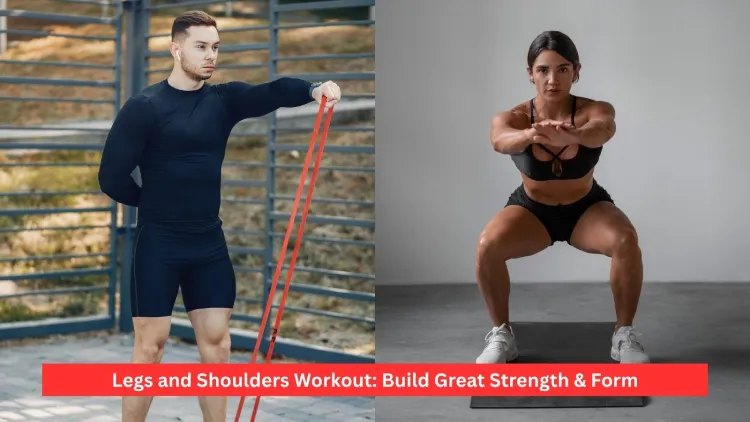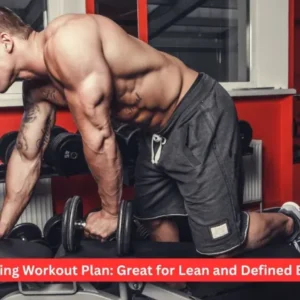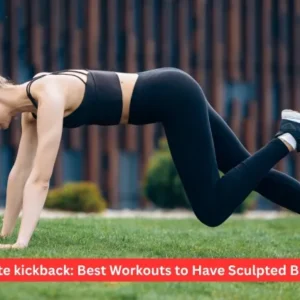Legs and shoulders workout is an effective source of building strength, stability, and athletic performance all in one effective session. Combining large upper and lower body muscles along with critical stabilisers in one exercise increases endurance, calorie burn and provides a well-rounded functional strength. Regardless of your goal, whether it is muscle gain, better posture, or taking your sports game to the next level, this combination is the most effective in the least amount of time.
You can visit our previous article on weighted abs workout if you’re concerned about building abs.
Why Train Legs and Shoulders Together?
Although leg and shoulder training in a day is a break from the conventional division into push/pull or upper/lower body days, it has its peculiar benefits. This combination is perfect when one seeks efficiency and does not want to compromise the quality.
- Whole-Body Strength: Full-body exercises, such as lunges and squats, use all major muscle groups, including arms and core, glutes, hamstrings, and quads, which helps you develop strength. However, performing exercises with those muscles increases the need to stabilise the shoulder muscles as well, particularly when using weights over your head. In the same regard, overhead pressing requires both core activation and lower body stabilisation.
- Time Efficiency: Are you the type of person who is busy all of the time? By training legs and shoulders together, you can, in one session, train two major muscle groups, leaving you with more days to rest or train other areas.
- Better Prowess in Sports: And the legs need to be strong to jump, run, and change direction in a short time, whereas powerful shoulders are needed in throwing, pushing, and lifting. The combined effect of training them is seen to be beneficial to any form of physical activity.
- Even physique: Muscular imbalances may occur as a result of concentrating on the upper body or lower body. Legs and shoulders workout maintains your training symmetrical and proportionate.
- Higher Calorie Burn: Compound movements for legs and shoulders involve multiple muscle groups and therefore, higher calorie burn and higher metabolic rate.
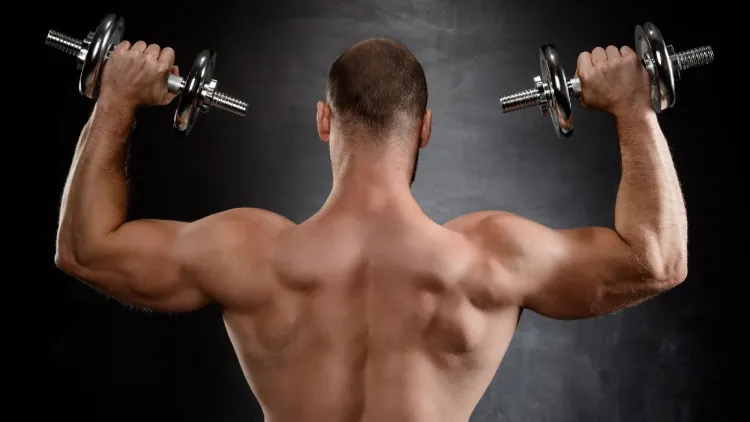
Muscles Worked in a Leg and Shoulder Workout
Considering that legs and shoulder workouts have a well-structured routine, exercising them will target numerous muscles to work in harmony toward building strength, stability, and mobility.
Leg Muscles
- Quadriceps – Using the front part of the legs, they consist of four muscles that are important for knee extension and speed movements.
- Hamstrings – Located behind the thighs, they are a crucial component in flexion of the knees and extension of the hips.
- Glutes – Your body’s biggest and strongest muscles, guy, which power your hip drive and your stability when you’re lifting.
- Calves – Essential for ankle balance/stability, running rate and vertical jump height.
Shoulder Muscles
- Deltoids: These are the muscles that are separated into three heads, namely front (anterior), side (lateral), and rear (posterior), which coordinate arm movement and lifting.
- Trapezius: Travels up the neck to the middle of your back and assists with posture and raises the shoulders.
- Rotator Cuff Muscles: These are tiny muscles that stabilise the shoulder joint and enable the shoulder to move in a controlled manner.

Best Leg and Shoulder Exercises
Legs and shoulders best training is a combination of heavy power-building exercises with isolation exercises. Compound exercises involve many joints and muscles together at the same time, whereas isolation exercises enable you to target certain areas.
Leg Exercises
- Barbell Back Squat – A must-do for your lower body strength and a great exercise for your quads, glutes and hamstrings.
- Lunges – Great for balancing out and targeting each leg separately for balance and addressing balance problems.
- Romanian Deadlift – Trains hamstrings, glutes and lower back strength.
- Leg Press – Mechanism seated exercise that only involves the quads with little use of the glutes and hamstrings.
- Calf Raises – Calf muscle strength, ankle stability and Explosive Power
Shoulder Exercises
- Overhead Press (Barbell or Dumbbell) – This exercise builds shoulder muscles and strength very well.
- Arnold Press – This is named after Arnold Schwarzenegger, and it works out the three heads of the deltoids.
- Lateral Raises – Targets the side delts, the delts, which will help broaden the shoulders.
- Front Raises- Strengthens the front delts, thus increasing the strength of pressing.
- Face Pulls- This is good for the rear delts and traps to help you keep a good posture.

Sample Legs and Shoulders Workout Plan
Strength and endurance exercises need to be incorporated into a well-balanced workout of the legs and shoulders. An example of a plan you can follow, starting with intermediate to advanced lifters, goes as follows.
Warm-Up (5–10 minutes)
- Dynamic movements: lengths on the legs, arm circles and torso rotations
- Light cardio: skipping rope, exercise bike, or treadmill walk
Workout
Legs:
- Back Squat-weighted bar- 4 sets of 8- 10 reps.
- Walking Lunges – 3×12 steps each leg
- Romanian Deadlift – 3 sets × 10-12 reps
- Standing Calf Raises – 3 Sets × 15 – 20 Rep.
Shoulders:
- Overhead Barbell Press – 4 x 8-10 reps
- Lateral Raise – 3 sets x 12 – 15 reps.
- Face Pulls – 3 sets × 12-15 reps
Cool Down (5 minutes)
- Static stretching of quads, hamstrings, glutes, and shoulders
- Desperate breathing to heal them
Note: Use adjustable weight where the final 122 reps of every set are a little challenging, but do not use bad form to achieve them.
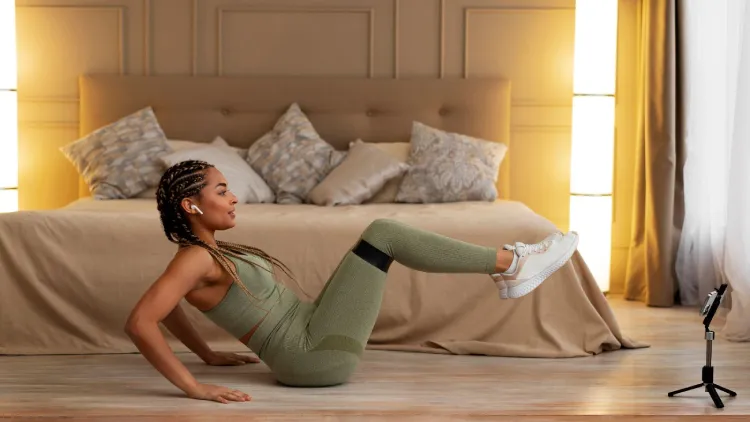
Tips for an Effective Legs and Shoulders Workout
The following are the proven tips to enhance maximum results and avoid injuries:
- Learn to Lift Properly: Holding a weight in the right position helps you avoid injury and lift in the right muscles.
- Apply Progressive Overload: Add weight or reps, or intensity gradually, to work your muscles. The best way to provide a continuous challenge to your muscles is through progressive overload.
- Supersets: On one day per week, pair a leg exercise with a shoulder exercise and perform them together in a row to save time and intensify a workout.
- Listen to Your Body: When you have joint discomfort, make changes to your form or alternate to another variation.
- Recovery First: Do not train legs and shoulders on consecutive days to obtain maximum muscle repair.
- Be Cerebral: Results are achieved through consistent training and not being spasmodic in training.
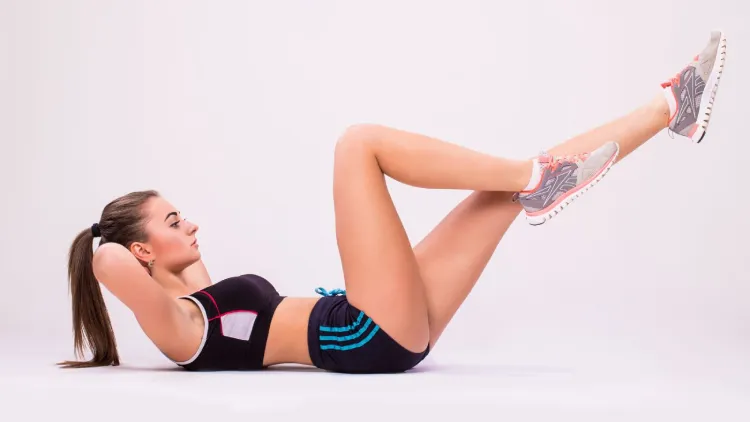
Benefits of a Legs and Shoulders Day
Adding a leg and shoulder workout to your 7-day program brings several benefits besides building muscle mass.
- Full-Body Strength- You gain lower body strength and upper body stability in the same session.
- Changes in Posture – Good shoulders and legs help you maintain proper posture in your daily activities.
- More Calories Burned – An aggressive training stimulus causes a higher metabolic rate for up to 48 hours after your workout.
- Better Training Results – This combination boosts jumping ability, sprint speed and throwing power.
- Convenience – You can work on two major areas of the body without taking extra days out of the gym.
Final Thoughts
One of the most effective training pairs that can help an individual to optimise the strength, balance, and athletic condition of any person is a legs and shoulders workout. The fact that you work your upper and lower body at the same time can also save you a good deal of time, but at the same time, makes the workout of these muscles more challenging by working them with multiple angles. Whether we are talking about heavy compound exercises such as squats and overhead presses or exercises specific to a particular muscle group, such as lateral raises and calf raises, such training will result in overall growth and better fitness.
No matter your goals, whether it is muscle building, sports performance, or overall health, you can add a legs and shoulders workout to your routine, and it will quickly pay off. As long as you give it time, work with good form and progressive overload, you will have a strong, well-sculpted physique with proportional dimensions, making you good enough to take on the world.
Frequently Asked Questions
1. May beginners undergo a leg and shoulder exercise?
Yes. There is no doubt that a beginner can adhere to a legs and shoulders training; however, one should limit weight load and pay attention to quality technique and not to overtrain. Bodyweight squats, lunges and some light dumbbell presses are good beginning exercises, nd then later you can graduate to heavier weights.
2. At what frequency should I combine leg and shoulder training?
A legs and shoulders workout done once or twice a week will be valuable to most everyone, and there should be a 48-hour recovery between workouts. In the event of you train other muscle groups on other days, you certainly want to ensure you balance overall weekly volume, lest you end up slackening fatigue or overuse injuries.
3. Which gear will I require to exercise my legs and shoulders properly?
It is a workout that requires very little equipment, i.e., dumbbells, resistance bands, or a barbell. Nonetheless, access to a squat rack, leg press machine and cable station may offer more variety in terms of exercises that can be done, and allow achieving a progressive overload more easily.
4. Does your legs and shoulders session aid in weight loss?
Yes. This form of exercise uses big compound exercises that involve more than a single muscle group of the body, resulting in a high level of burning calories. Together with a healthy diet, leg and shoulder exercise could increase the metabolism rate, burn more fat, and better body fat percentage.

